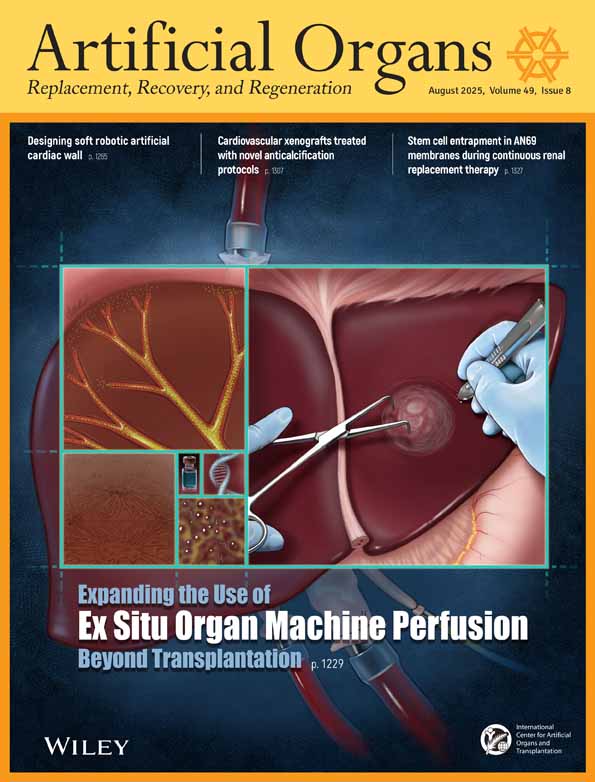Preprimed Artificial Lung for Emergency Use
Abstract
Abstract: We investigated the possibility of preprimed storage of an artificial lung (AL), aiming at facilitating its emergency use. Test ALs, consisting of a special microporous hollow fiber membrane made of polyolefin in which direct blood-gas contact was completely eliminated, were preprimed with saline solution, sterilized by γ-ray irradiation, and evaluated after 1–3 months of storage at room temperature. A small amount of bubble was noted in the priming solution after storage in some ALs, which most likely originated from the air dissolved in the priming solution or persisted in the liquid compartment at priming. Although the preprimed solution contained several polyolefin-breakdown products due to irradiation, including ethyl alcohol, n- and t-butyl alcohol, acetone, and carbon dioxide, the levels of these substances were at concentrations known to be not toxic. Endotoxin concentration was negligible. In SEM observation, no perceptible microstructural change was observed in the hollow fibers after preprimed storage. Maximum tensile stress and ultimate elongation of the hollow fiber in the test ALs were reduced by approximately 20% and 3%, respectively, from those of the control AL. The influence of preprimed storage on gas-exchange function was examined in a venoarterial bypass animal study using a goat. Oxygen transfer function was well preserved whereas carbon dioxide removal function was slightly lowered according to the storage term in the stored ALs compared with those of a nonpreprimed control AL. On the basis of these results, we conclude that preprimed storage of the AL with γ-ray sterilization is basically feasible and realistic.




